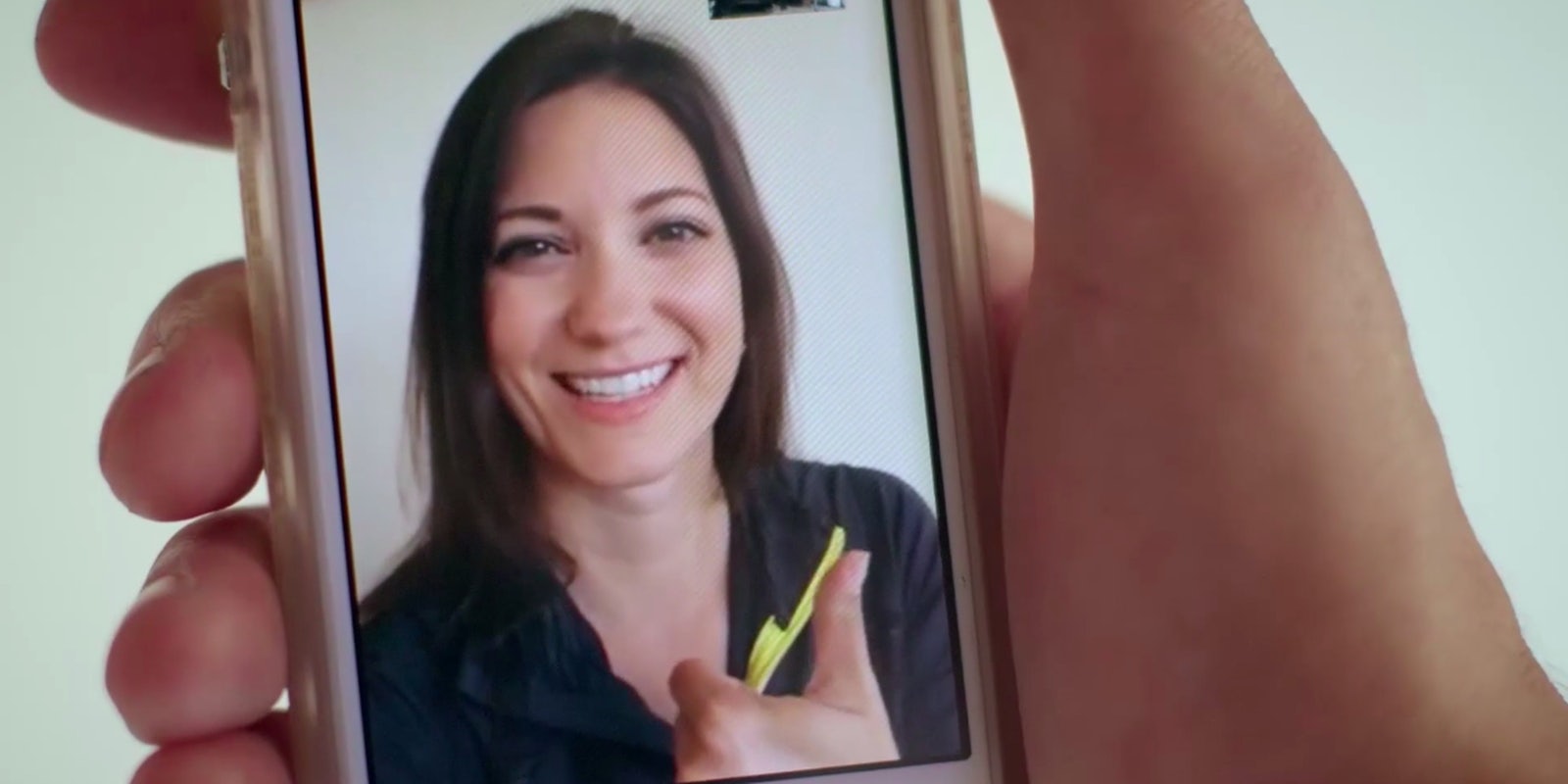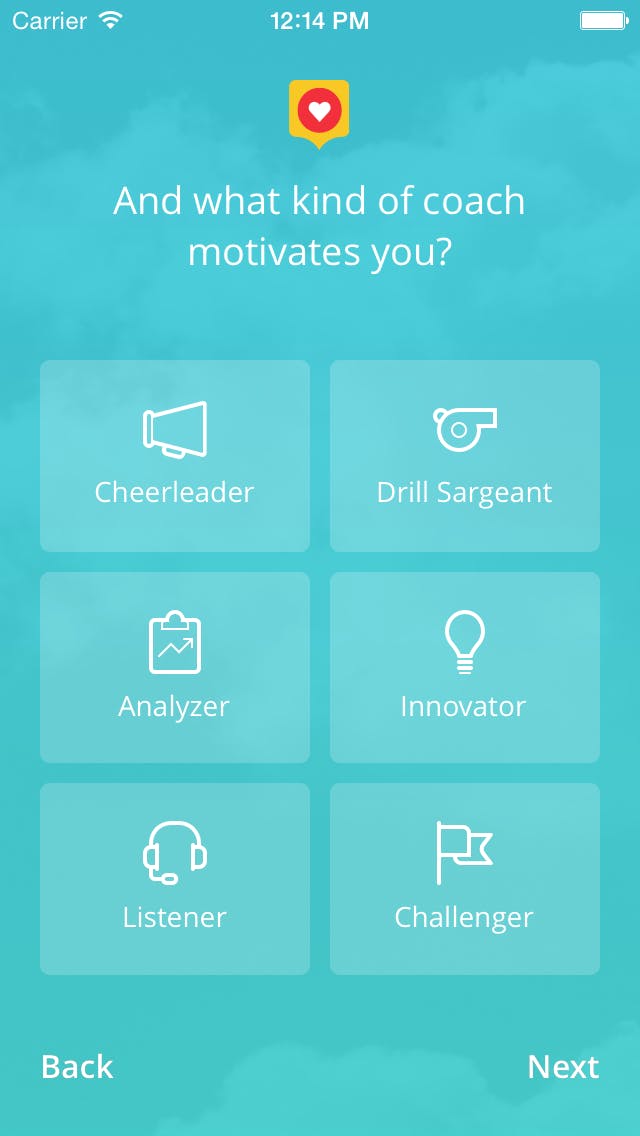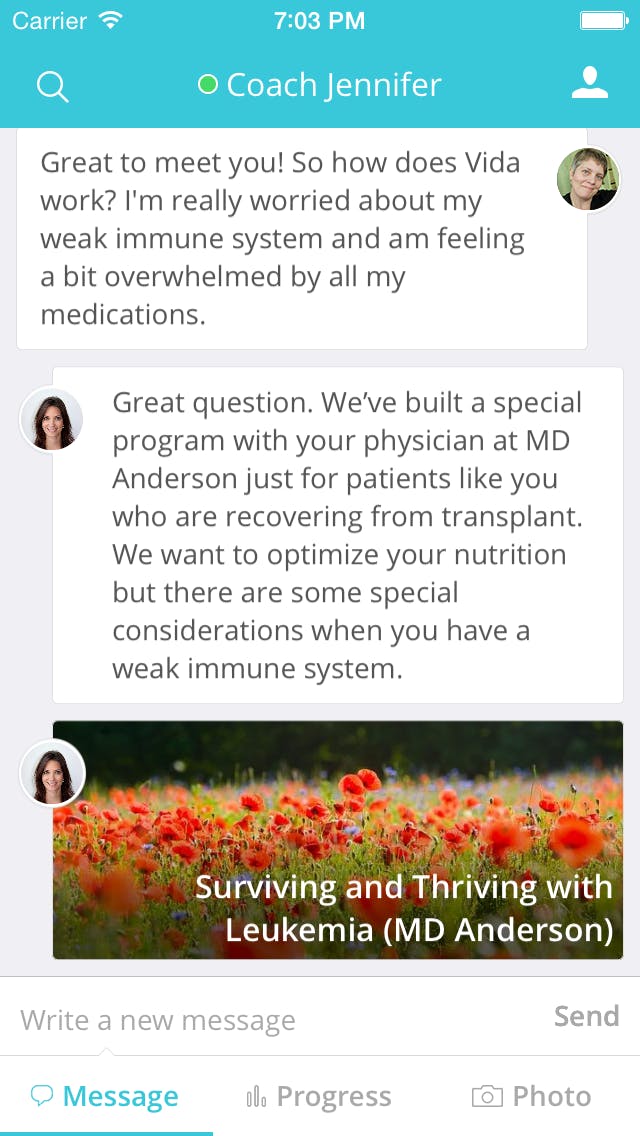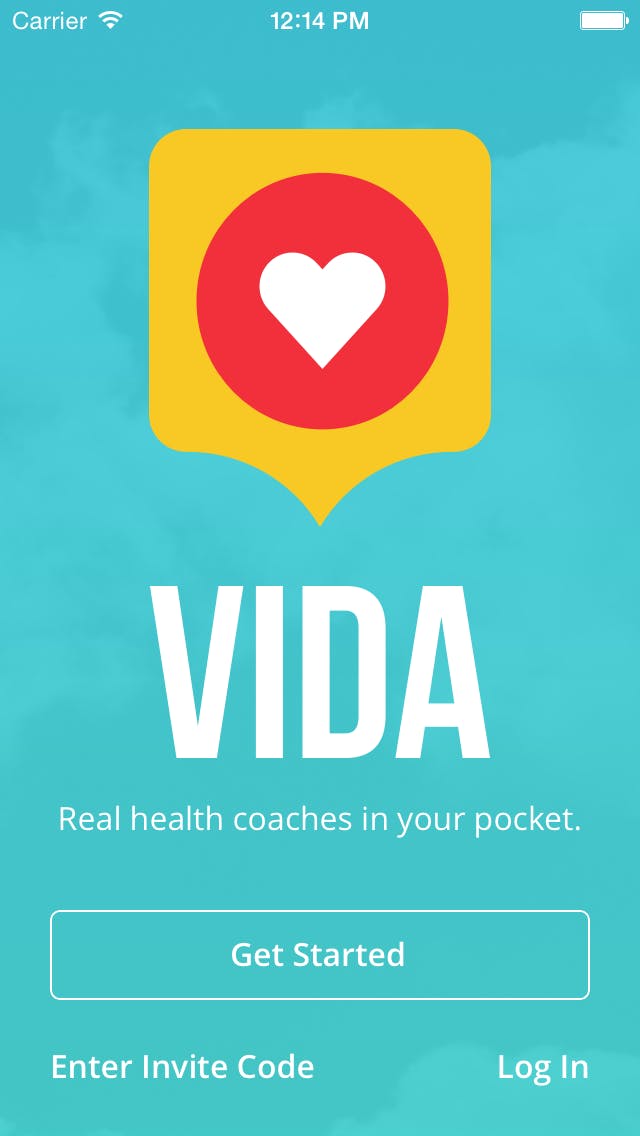The business of getting health is time and money intensive. There’s the food, gym memberships, the vitamins and supplements. The things that are supposed to get you into shape are guarded behind a gate that requires a credit card swipe to get in. And the more individualized you get, the bigger the price tag. That’s why there are thousands of apps that offer the same variation of common workouts available to download for next to nothing (whereas a session with personal trainer will cost you a sizable chunk of your pay check).
Vida Health Coach is searching for the middle ground—personalized health advice from a dedicated coach presented in the pocketable manner of a mobile app. It’s a platform that adds that necessary individual element to a person’s health and fitness plan without totally breaking the bank.
And so, I signed up, forked over my money, and met my personal trainer Katie.
Getting started
I started using Vida despite having a fairly consistent fitness regimen, though at this point it may be more predicated on fear than personal accomplishment. I lost a fair amount of weight at one point in my life and I’ve maintained a regular workout schedule since having success, in part because I’m afraid of what will happen if I stop. The workouts are healthy, the mentality is not.
So when I set up my Vida profile, I decided that I didn’t want to focus on how many sit-ups I should do every day or how many miles I need to run every week. Instead, I thought it best to focus more on mental health.
When building a profile on Vida, users are presented with a list of health goals. These range from a wide variety of missions that range from dietary changes to physical conditioning. There are specific choices like “detox sugar and junk food,” and more general ideas like “get fit.”
I loaded up my profile with selections that seemed geared toward altering a mental state; “feel better,” “feel less sad or anxious,” and “conquer stress” were at the top of my list of things to accomplish.
You can dispose of a trainer like a bad Tinder match.
The other option users have to set before getting into the action part of the app is outlining the kind of coach they would most like to work with. This is nearly as important as picking goals in the first place, because without the right kind of motivation coming from the coach, the likelihood of following their instruction drops. I usually find relentless positivity kind of annoying when it’s directed at me. Even if it’s totally genuine, it feels patronizing, which I know is ridiculous and probably plenty speaks to my mental state. I don’t mind being pushed, and I like understanding the reason for why things are a certain way, so I opted for a coach who is an analyzer and a challenger.
That’s how I landed with Katie, a Certified Health Coach with a B.A. in Nutrition Science and a background in yoga instruction. She stood out to me in an accomplished field of options that included qualifications like a Master’s in Psychology, a Ph.D. in Natural Medicine, a Doctor of Philosophy, and a Licensed Clinical Social Worker.
The virtual balance beam
Users have the ability to switch coaches if things aren’t working out—an awkward proposition in person, but one that is completed in a couple taps in Vida. And the app regularly prompts users to rate their coach the same way that most ask for a rating in the App Store.
It’s features like this that reveal the strange dichotomy of Vida: The service is both extremely personal and separated from reality by a virtual wall. You can dispose of a trainer like a bad Tinder match. I didn’t have to go through this process as Katie turned out to be a great coach, but I did occasionally juggle with the juxtaposition of dealing with a real person versus dealing with an app.
There’s a sense of urgency to Vida, and understandably so since you’re paying $15 a week for the service, so you might as well get everything you can out of it. But it’s overwhelming at times. The majority of the app is built upon a messenger service that allows you and your trainer to communicate. There are weekly video check-ins, but for the day-to-day stuff, you’ll be communicating via messaging.
I heard from Katie at least once a day, and she was always quick to respond if I had a question or wanted to give her an update. For the first week or so, she shared content cards crafted by Vida, designed to encourage the right attitude and approach to personal health and fitness. A lot of it was pretty general stuff—certainly nothing groundbreaking or creating a lightbulb-going-on moment—but somewhat useful nonetheless.
The problem is it gets tossed into the catch-all drawer that is the notifications center, and it’s lumped with new Facebook messages, a prompt that it’s your turn in Words with Friends, weather alerts, etc.
When you meet with a personal trainer in real life, that dedicated time is solely focused on your fitness. Your interaction with them is direct and you’re taking action to execute your goals with them. With Vida, you have to be more proactive for your own sake because it’s easy to dismiss a message from your trainer with a swipe.
While the service is designed to help you improve your personal health, it’s still an app. If you’re getting too many superfluous notifications from it, you’re going to either disable the notifications altogether or start ignoring them.
Basically, we’re really used to ignoring notifications. And even though you’re paying for Vida’s, sometime you’re tempted to give them the same treatment.
Coach’s corner
The video consultations are the most helpful tool in combating apathy toward the system. I set up my first call with Katie and spent about half an hour with her establishing what my goals were, what I wanted to accomplish, and how to best fit it into my schedule. We talked about what I was already doing in terms of fitness and health and what could be improved. In the app’s description, it promises a “32-point health assessment,” which I don’t recall doing unless Katie disguised it as a normal conversation.
Vida is also capable of pulling information from MyFitnessPal for food and dietary intake and from FitBit for exercise and workout data to give the trainer a more detailed look at the day-to-day of a user. I didn’t end up requiring either of these for my use but the linking process seemed messier than necessary, requiring users to connect through the Apple Health Kit, a needlessly roundabout process.
I didn’t end up with many of the type of health goals you might think you’d set with a personal trainer. Katie set a simple goal for me for my first week. To address stress and anxiety, she suggested I take more breaks from work. (Sorry, work!) She followed up our session with a text message that contained a simple yoga instructional, a five-minute routine that could be used to break up long stretches of writing. (I’ve used it twice over the length of this piece.)
It sounds like a pretty simple thing, and it is. But coming from a professional gives it validity—and if you’re paying for the information, that’s a motivator as well. For the first week, I started to adopt Katie’s advice and was pleased with the results. I got more done by stepping away for brief periods in the middle of the day rather than plowing through until finished and feeling drained after. Goal accomplished, results achieved.
Each week, Katie would encourage me to take another step toward dealing with stress at the source and handling anxiety. She has me looking for new activities to pursue, partaking in regular yoga classes, and engaging in meditation. Anything I haven’t felt comfortable with or wanted changed, she’s happily adjusted and made the experience tailored to me just as the service had promised. Anything I liked, I made part of my routine and reported the success to Katie.
The app is out of shape
The app itself, though, could use a little bit of work. Your entire history with your trainer is just a single feed, continuously getting longer the more time you spend with them. This is great for maintaining everything you’ve done but not ideal for actually finding things of interest. I still use the five-minute yoga break that Katie sent me after my first consultation, but now I have to scroll through a month’s worth of content just to find it. I also can’t delete any content card that I didn’t find interesting or useful; they’re stuck cluttering my feed.
Each week, Katie would encourage me to take another step toward dealing with stress at the source and handling anxiety.
The app is also a little too devoid of features for tracking progress. There’s some very basic meters that can log daily activity levels but no other way to keep track in-app. My trainer was able to update the goals we set each week on what seemed like a glorified digital notepad. A Web-based interface wouldn’t hurt here, either. Perhaps as more fitness trackers and adjacent health apps are integrated, a Vida will bulk up a bit. For the time being, it’s skin and bones.
Using it right
Just signing up for a health service like Vida will not make you healthy, just like wearing a FitBit on your wrist won’t do anything for you if you sit around with it on all day. You’ll get out from Vida plenty if you’re willing to put in the time and if you work with your trainer effectively. They aren’t going to be there in person to keep you on track or insist that you do something, so a considerable amount of self-motivation is still required.
That’s all important to keep in mind because while $15 a week is much cheaper than any in-person personal trainer, it’s also more limited. That might be a lot to pay someone to just tell you to lay off the sweets—especially if you’re going to ignore them.
The real crux of Vida comes down to your coach. The app itself is plagued with shortcomings, but if you have a good rapport with the person on the other end of it, it’s easy to stay engaged and on track with their help and encouragement. If you get a coach like Katie, the delivery method doesn’t matter as much because the information is what’s most important.
Photo via Vida





